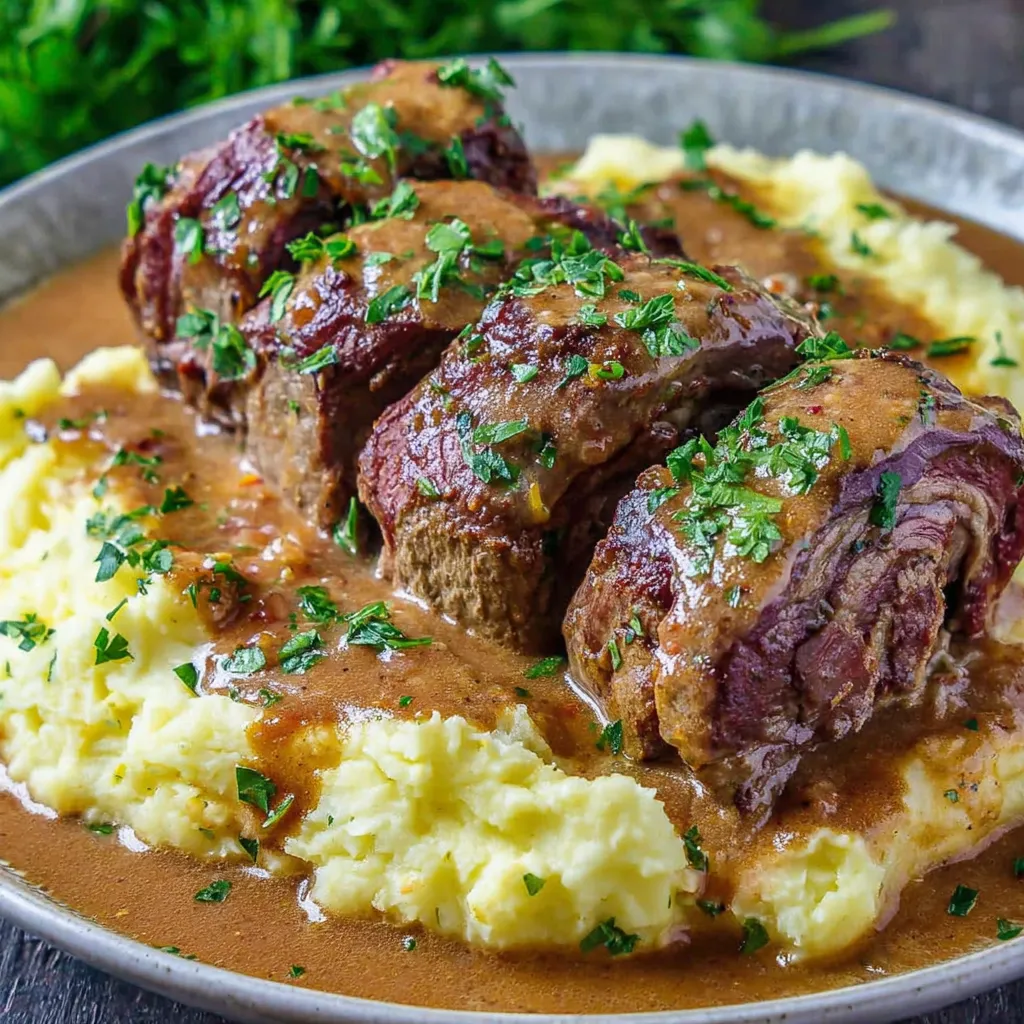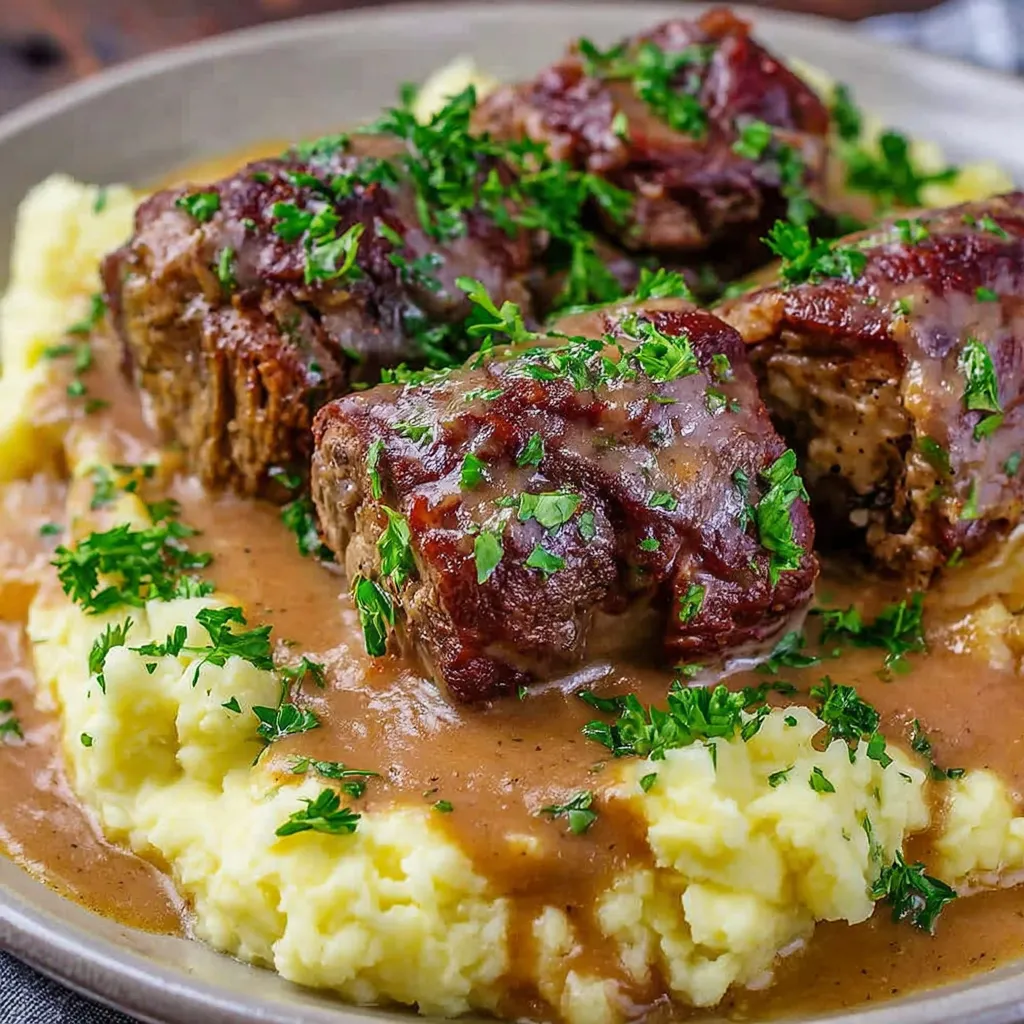 Save
Save
German rouladen is a classic comfort dish that is all about bringing people together for a meal that feels extra special. Thin slices of beef are generously slathered with zesty mustard and then wrapped around smoky bacon and crunchy pickles. After a slow simmer in savory broth, everything is coated in a creamy, rich gravy. If you are looking for a hearty meal that just feels like a hug on the plate, this is it.
I first learned to make rouladen with my grandmother who always insisted on using the good mustard and extra pickles for the best flavor. Every bite takes me right back to her kitchen table.
Ingredients
- Thin beef round steaks or rump roast sliced thin: look for bright red meat with minimal gristle for easier rolling and best texture
- German mustard or Dijon: this is the magic ingredient that gives the dish its signature tang a robust and spicy style works best
- Bacon thick cut: adds a smoky depth plus tenderness
- Dill pickles cut into strips: firm and crunchy ones help hold their shape nicely during the long simmer
- Oil: choose a neutral oil like canola or sunflower for browning without extra flavor competing
- Large onion diced: for savory sweetness to balance the filling
- Beef broth: choose a good quality beef broth low sodium if possible for maximum beefy flavor and control over saltiness
- Bay leaf: adds a delicate aromatic backdrop to the sauce
- All purpose flour: helps thicken the gravy to just the right consistency
- Sour cream: for a creamy finish and a little tang if possible use full fat for silky sauce
Step-by-Step Instructions
- Prepare the Beef:
- Lay each beef steak flat on a cutting board. Use a meat mallet or rolling pin to gently pound until each piece is about one quarter inch thick. This helps with both tenderness and easy rolling.
- Fill and Roll the Rouladen:
- Spread a thin layer of mustard over each steak. Lay a slice of bacon and then a couple of strips of pickle on the mustard. Starting at a short end roll the steak up tightly around the filling. Use toothpicks or kitchen twine to secure them so they keep their shape.
- Brown the Rouladen:
- Season each roll with salt and pepper on the outside. Heat oil in a large skillet over medium heat. Sear the rouladen on all sides turning often until they are nicely browned. This gives the sauce its deep flavor.
- Sauté the Onion:
- Add the diced onion to the skillet with the browned rouladen. Cook three to five minutes stirring often until the onion is soft and starting to turn translucent. Scrape up any browned bits from the pan for extra flavor.
- Simmer in Broth:
- Pour in the beef broth and tuck in the bay leaf. Cover the skillet and lower the heat so the liquid simmers gently. Let the rouladen braise for about one and a half hours turning occasionally until the beef is fork tender.
- Finish the Gravy:
- Remove the rouladen to a plate. In a bowl stir together flour and sour cream until smooth. Whisk this mixture into the hot broth in the skillet. Simmer uncovered stirring often until the gravy thickens to your liking. Adjust seasoning with more salt or pepper if needed.
- Return and Warm Through:
- Place the rouladen back in the skillet with the finished gravy. Heat over low until everything is piping hot. Serve immediately with your favorite starchy side.

My favorite ingredient here is always the pickles. That crunch and sharpness against the tender beef makes each bite exciting and different. Growing up my family would always argue over who got the extra pickle rolls so I learned to sneak in a few more strips each time.
Storage Tips
German rouladen keeps well in an airtight container in the fridge for up to three days. Reheat gently with a splash of beef broth to keep the meat moist. You can also freeze the rouladen successfully if you wrap them tightly and thaw in the refrigerator before reheating.
Ingredient Substitutions
If you cannot find German mustard try a good Dijon or even a mix of yellow and spicy brown mustards. For the pickles use any firm dill variety including sandwich stackers or even cornichon halves. If you are out of beef broth chicken stock can work in a pinch though the sauce will be lighter.
Serving Suggestions
Serve rouladen with buttery mashed potatoes egg noodles or classic German spaetzle for the ultimate comfort feast. I also love a side of roasted carrots or steamed green beans for freshness on the plate. Let everyone spoon the extra gravy over their sides for truly memorable bites.

A Bit of History
Rouladen has roots in German home cooking and is often a star of Sunday dinners or holiday tables. Traditionally it is a dish of thrift as it uses tougher cuts of beef and stretches them with flavorful fillings. Families each have their own secret touches whether it is the type of pickle or the brand of mustard that makes it theirs.
Recipe FAQs
- → What cut of beef works best for rouladen?
Thin round steaks or rump roast cut into thin slices work well for rolling and stay tender after a slow simmer.
- → Can the beef rolls be prepped ahead of time?
Yes, the beef rolls can be assembled, covered, and refrigerated until you're ready to cook them.
- → Do you need to brown the meat before simmering?
Browning the meat provides deeper flavor and color to both the rouladen and the gravy.
- → What are traditional side dishes to serve?
Popular sides include mashed potatoes, spaetzle, or buttered egg noodles to soak up the savory gravy.
- → Is there a way to thicken the gravy at the end?
Whisk flour into sour cream, then stir into the simmering broth until it thickens to your liking.
- → Will leftovers keep well?
Yes, rouladen can be reheated gently in the gravy and often taste even better the next day.
